How to be anti-racist like Griffin Van Meter in 10 easy steps
[Editor’s Note: A previous post described the background and purpose of this highly credentialed Creatives for Common Sense study on how to be anti-racist like Lexington Creative icon Griffin Van Meter in 10 easy steps.]
Low income neighborhoods provide many of the raw materials necessary for becoming anti-racist. Well-chosen neighborhoods will provide demographic, grant, architectural, consumer, narrative and other levers of opportunity for the bold Lexington Creative looking to embark on his/her/its/their (therts) own multi-cultural journey. For this reason, much thought should be given to neighborhood selection.
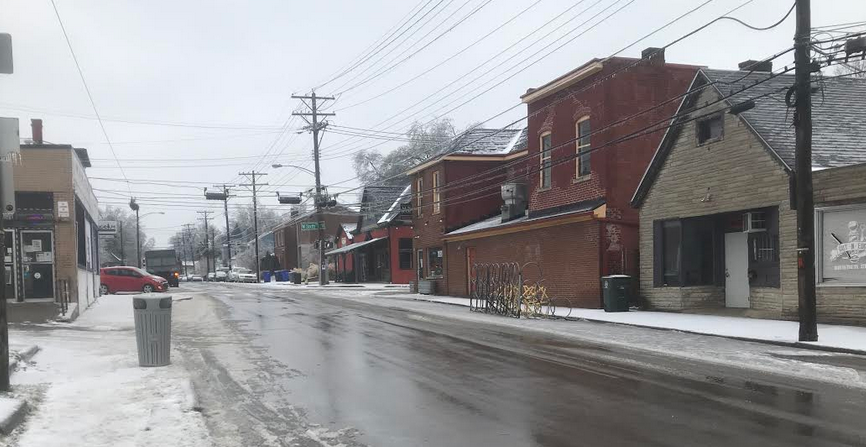
Future steps will cover how Creatives can capitalize upon such an investment. For now, just follow the sage words of the Umoja Village anti-racist activist Max Rameau, of the global city of Miami, authentic home of the world-renowned Art Basel art fair:
“The root issue is land. Not just in the physical sense of the word, although that is included, but land in the political sense of the word, meaning power and control over land. Land is an essential element of liberation, an absolute prerequisite.”
Following Rameau, to achieve full liberation one should consider purchasing a diverse anti-racist portfolio of low-income land: a bar (or two), an apartment building (or two), a duplex (or ten), non-profit space, a church, a home (or two), cutesie shotguns and capes when thert can find them, shipping containers, and, ideally, any commercial property that catches therts eye. Even street names should be considered for potential anti-racist utility.
The model
While purchase of a single anti-racist property (a “home”) is admirable, CfCS does not recommend limiting one’s journey to a single low-income parcel. We do not have the space to delve into the particularities but cite instead the example of North of Center editor Danny Mayer (he/him), whose single-purchase anti-racist journey has (we might say predictably) resulted in his becoming like Father Tom Van Meter: a branded racist. This is not to disparage Mayer. He seems an amiable enough editor—and, allegedly, he had legit black acquaintances while a humanities graduate student at the University of Kentucky from 2000-2007 (though, lamentably, we CfCSers deem it doubtful that such creative cross-cultural interactions occur now that he teaches community college students).
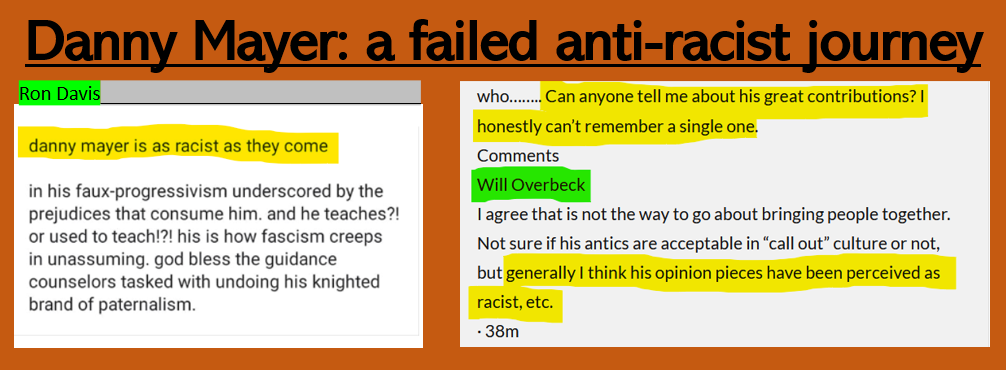
We leave it to people far more credentialed than we to adjudicate Mayer’s on-the-cheap (we mean, really, Danny, only one home?) racial actions. Rather, we use the North of Center editor only to point out that one’s journey is only as successful as the audience to which it gets displayed, and that a one-property anti-racist has few outlets upon which to display that journey.
It should come as no surprise that, for a vastly superior anti-racist model, we at CfCS consult the purchasing history of the Gentleman Griffin Van Meter. We use Griffin’s own story of buying the rebranded NoLi neighborhood (Anti-racist Step 4) to highlight three general CfCS-researched axioms regarding low-income site selection:
One, the closer the low-income neighborhood to downtown, the greater its anti-racist value. Two, neighborhoods that come with attached commercial districts, no matter how small such districts might be, always catalyze progressive investment. Thert wants nearby low-income land, but also mixed-use low-income land.

And three, anti-racists should pay attention to neighborhood architecture, which can only add longterm value to the novice anti-racist’s investments. (CfCS tip: if needed, schedule a consult with a UK architecture professor or historic preservationist.)
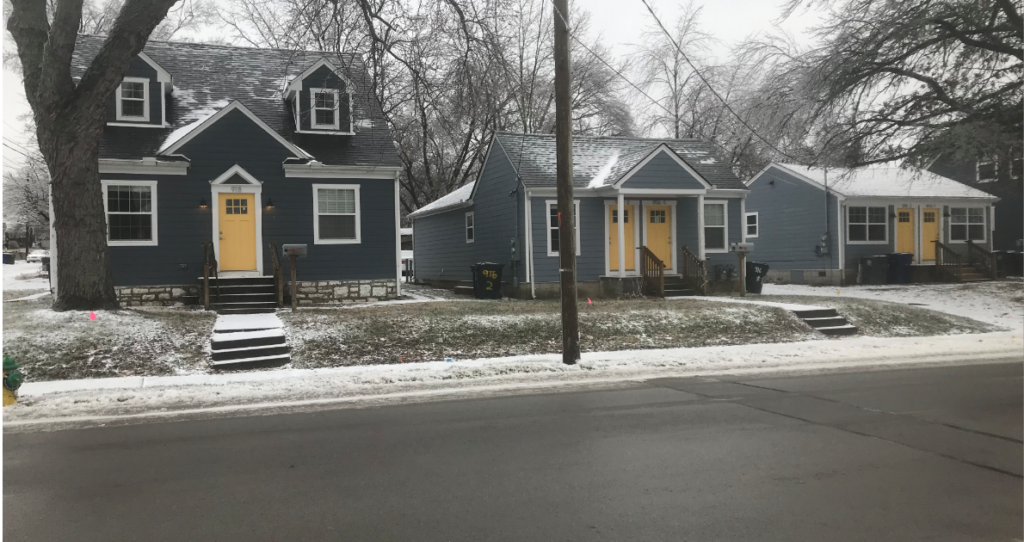
In town opportunities
Alas, in Lexington, first-cut neighborhoods located in the Jefferson Street, MLK, NoLi, East End, National Avenue, and Distillery Districts have already been claimed by various enterprising anti-racists.
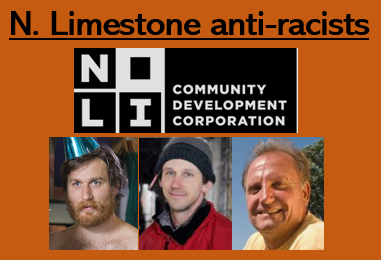
Potential first-cut anti-racist opportunity neighborhoods include the West End/Georgetown corridor (the West George?) and the as-yet unbranded industrial territory surrounding Seventh Street between Elm Tree and Winchester Road (the High East End, hub for the city’s first pot dispensaries?).
Due to the geographic and cultural proximity of these two neighborhoods to Lexington’s anti-racist belt, acquiring a diverse portfolio of land within these low-income neighborhoods will not come cheaply. It is true that enterprising anti-racist investors may have the ability to divide the West George tract in half, opening an upper and a lower Price Road allotment to a more diversified development. However, the costs of such a division are sure to creep, and this is bound to result in therts own diminished community control.
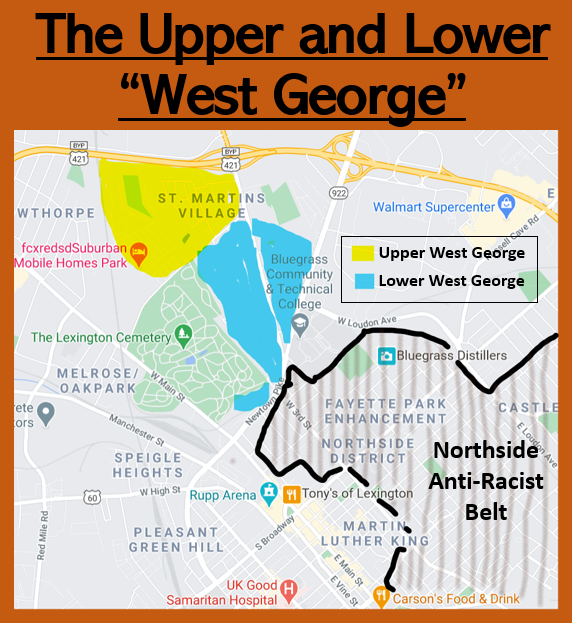
These issues may not be a roadblock if one is, say, Father Tom Van Meter, whose anti-racist journey was kickstarted last July by describing the professional United States football league (not to be confused with global futbol) as “the n____ football league.” The man who birthed Triple Crown Winner American Pharaoh can surely afford to front the extra money for a really well-rounded, we dare say enjoyable, anti-racist journey that strays little from son Griffin’s anti-racist holdings along the North Limestone corridor.
Such in-town costs, however, may be too high for the region’s more everyday Creative anti-racists. This leads us to…..
Land outside the anti-racist belt: pros and cons
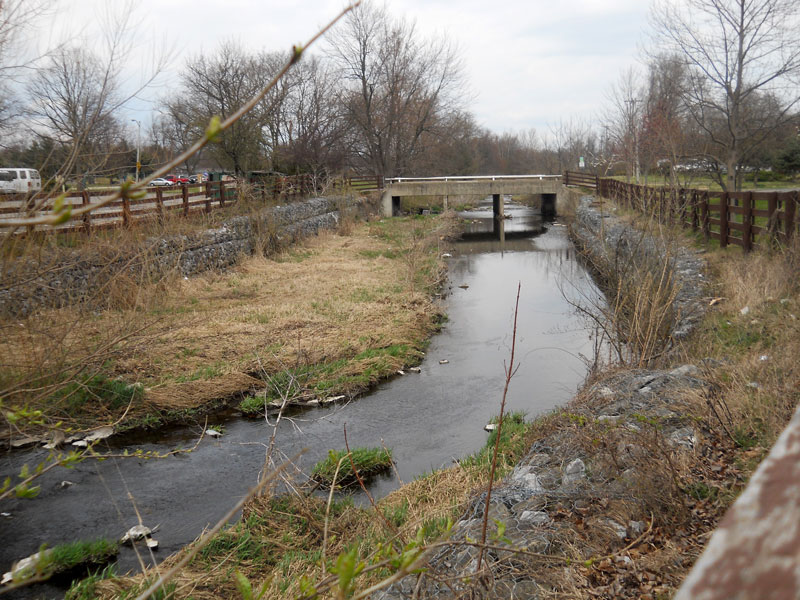
In Lexington, off-the-beaten-path options might include Cardinal Valley (alas, already named), or any of the Eastland Parkway (Little Dixie?), Woodhill (Froulaville), Center Parkway/River Park (River Centre),or Winburn communities that have the grave misfortune of existing outside or nearby New Circle Road.
As with economy choices generally, acquiring such off-Circle neighborhoods does come with drawbacks. In the case of Cardinal Valley, a high Latinx population has the potential to dilute some of the Black-Lives-Matter progressive brandwork into a more homogeneous brown (maybe even yellow) lives matter populism.
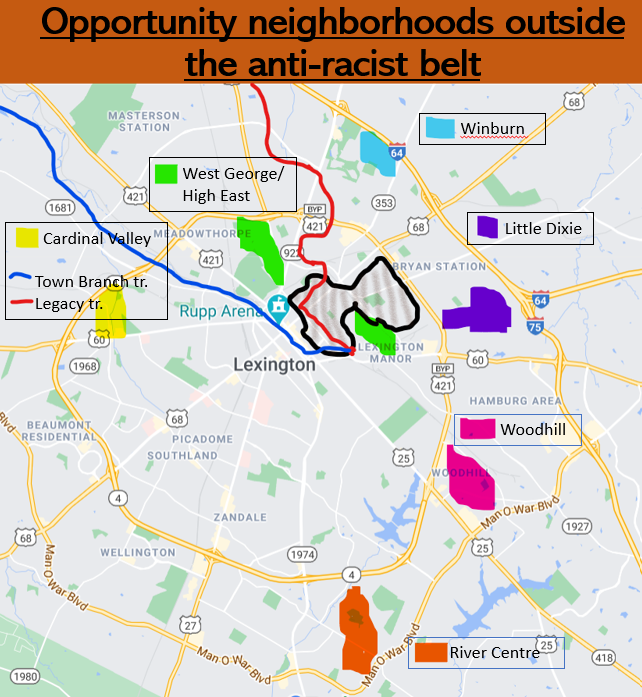
This similar diluting headwind exists across all opportunity neighborhoods located outside New Circle, where, alas, white poverty and black poverty and Latinx poverty have inter-mixed in ways that are sure to bleach one’s anti-racist pathways. While there is some measure of intersectional value in purchasing these neighborhoods, we agree with the wise Creatives at the Bullhorn Will advertising agency that “[e]stablish[ing] a clear messaging framework” for your journey is of utmost importance. “Communication that may once have been appropriate”—like therts anti-racist journey—“can come off as tone-deaf or opportunistic” in changed conditions.
A related headwind exists in that these neighborhoods are also located some distance from the northside anti-racist belt and its protective anti-racist infrastructure of craft breweries, progressive media and music outlets, community kitchens, free art, bike collectives, UK student radicals, social justice patisseries and BIPOC peddler’s malls. It is true that future returns from these ever darkening suburban neighborhoods may be great if that infrastructure were to arrive, but their unfortunate location relative to current local power centers render them a short-term loss.
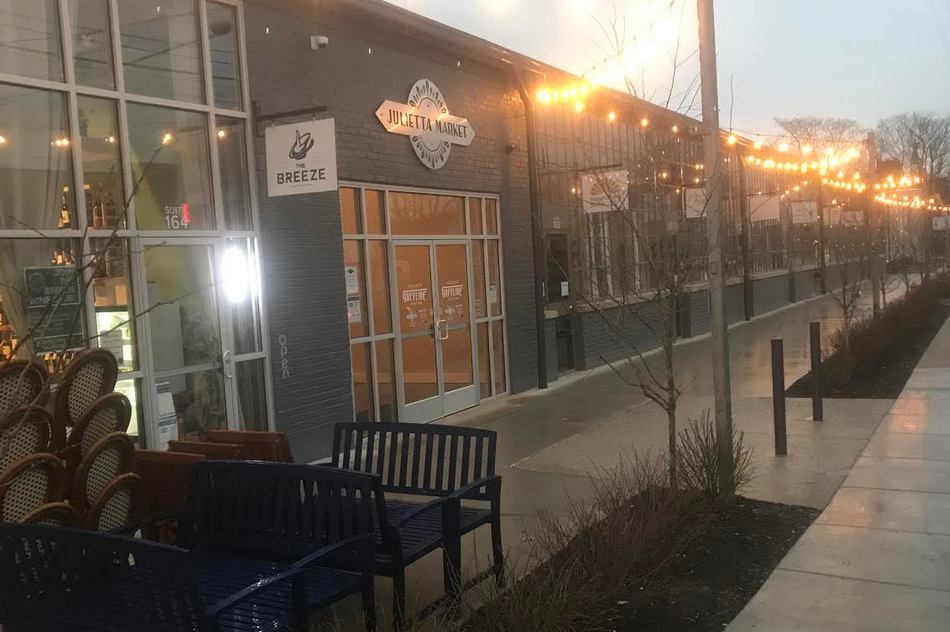
(Yes, this seems cruel, but let’s recognize: it is not the fault of anti-racist Creatives that the suburbs are drab places lacking any authentic architecture or story to capture our attention, nor is it our fault, no matter how lamentable, that some black Lexingtonians have moved to these formerly white far-off areas with slow bus service and no inter-connecting bike routes, not to mention good croissants. All we can do as Creatives is to continue making good, incremental investments in our own neighborhoods to allow us to keep growing our own personal brands of anti-racism.)
Satellite cities and purchasing power
Another creative option is the purchase of an anti-racist neighborhood located in a satellite Lexington city. In expanding one’s search to the hoods of Paris, Versailles, Mount Sterling, Danville, Winchester and the like, savvy anti-racist investors may find bargains that contain most, if not all, of the essential ingredients listed at the outset.
True, these neighborhoods may be brown, yellow even, but such is the lamentable nature of low-income neighborhoods across small Kentucky towns. In our experience, however, the exceptional distances (15-30 miles) from the Lexington metropole generally render moot all direct lines of actually-existing reality. Therts anti-racist satellite city neighborhood may appear the color of sifted flour, but we surmise a low probability that therts peers in Lexington would ever know.
In fact, one of the choicest opportunities, as we see it, might involve the purchase of the Danville neighborhood surrounding the home of Frank “X” Walker, native Danville Affrilachian, former Kentucky Poet Laureate, and forever “Poet of the Projects.” Walker, now a UK professor, resides near Lexington’s own former projects in the uplifting East End neighborhood being developed by the radical informal anti-racist collective of Phil Holoubek, Mike “the Bulldog” Scanlon, Marty Clifford, Community Venture Services, Robert Hodge, and Chad Needham.
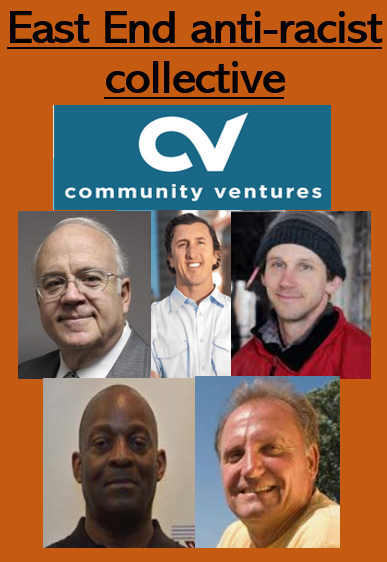
We CfCSers dream of the day when some bright Creative figures out how to leverage Walker’s compelling story into a world-class Danville development!
Short-term, long-term
In closing, we observe that there is no single pathway to achieving therts anti-racism, in part because we are all at different points on our own individual journey. Different Creatives have different needs and concerns. Newly convicted racists like Father Tom may be more incentivized to purchase a high-value low-income portfolio proximate to Lexington’s already-established anti-racist belt. For those with the means and energy, we say, Jump on in! The market’s been pre-heated for you!
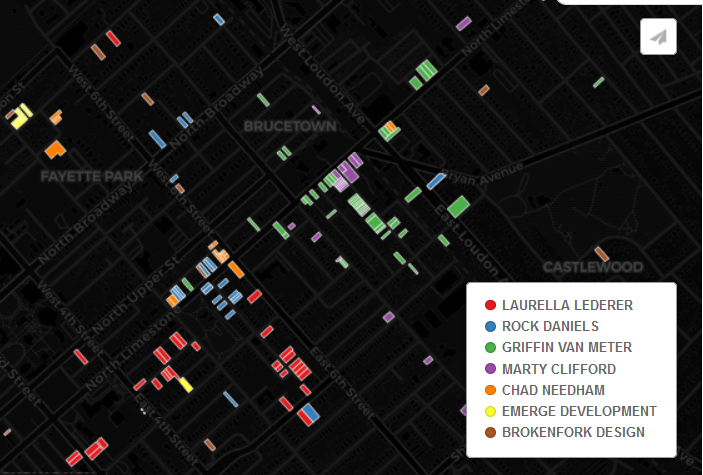
For Other aspirational Creatives, particularly those still-in-the-closet racists, a plan to purchase more outlying territory as a down-the-road anti-racist investment will likely produce (one hopes!) good future returns. For Others, the more adventurous pioneers among us, the low income neighborhoods of Paris, Millersburg, or Mount Sterling may well represent the right journey.
In “Step Two,” CfCS will begin to discuss strategies for leveraging land investments to maximize therts anti-racist potential.

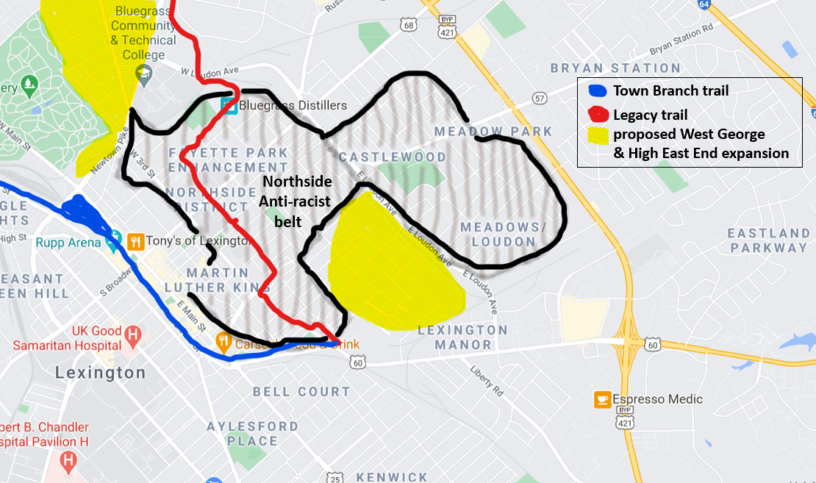



1 Pingback